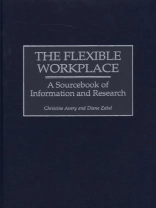Flextime, telecommuting, compressed work week, job sharing, downshifting, and hot desking-these terms are infiltrating our vocabulary at an increasing rate, keeping pace with change in the workplace. Although there is a large body of literature on the changing nature of work and workplace flexibility, there is no handbook that synthesizes the research on all aspects of this topic. Pulling together the vast literature on this subject, Avery and Zabel explain the concept of flexible...
Flextime, telecommuting, compressed work week, job sharing, downshifting, and hot desking-these terms are infiltrating our vocabulary at an increasing rate, keeping pace with change in the workplace. Although there is a large body of literature on the changing nature of work and workplace flexibility, there is no handbook that synthesizes the research on all aspects of this topic. Pulling together the vast literature on this subject, Avery and Zabel explain the concept of flexible work, trace the origin and growth of this workplace trend, and review the research on a range of flexible work arrangements.Workplace flexibility is international in scope. Companies, both in the United States and abroad, have become increasingly interested in implementing flexible work arrangements. The authors include a chapter on companies in North America, Western Europe, and the United Kingdom that have been leaders in implementing flexible work arrangements. They identify areas ripe for additional research, suggest a broad array of resources, and discuss strategies for locating additional information, including relevant databases, Internet resources, organizations, and search terms. This is a valuable handbook for managers, researchers, and students working or studying in the areas of human resource management, industrial/organizational psychology, and the sociology of work.












